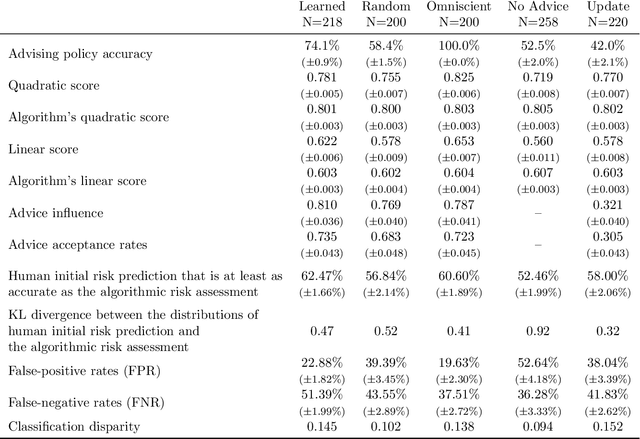Learning When to Advise Human Decision Makers
Paper and Code
Sep 27, 2022



Artificial intelligence (AI) systems are increasingly used for providing advice to facilitate human decision making. While a large body of work has explored how AI systems can be optimized to produce accurate and fair advice and how algorithmic advice should be presented to human decision makers, in this work we ask a different basic question: When should algorithms provide advice? Motivated by limitations of the current practice of constantly providing algorithmic advice, we propose the design of AI systems that interact with the human user in a two-sided manner and provide advice only when it is likely to be beneficial to the human in making their decision. Our AI systems learn advising policies using past human decisions. Then, for new cases, the learned policies utilize input from the human to identify cases where algorithmic advice would be useful, as well as those where the human is better off deciding alone. We conduct a large-scale experiment to evaluate our approach by using data from the US criminal justice system on pretrial-release decisions. In our experiment, participants were asked to assess the risk of defendants to violate their release terms if released and were advised by different advising approaches. The results show that our interactive-advising approach manages to provide advice at times of need and to significantly improve human decision making compared to fixed, non-interactive advising approaches. Our approach has additional advantages in facilitating human learning, preserving complementary strengths of human decision makers, and leading to more positive responsiveness to the advice.
 Add to Chrome
Add to Chrome Add to Firefox
Add to Firefox Add to Edge
Add to Edge